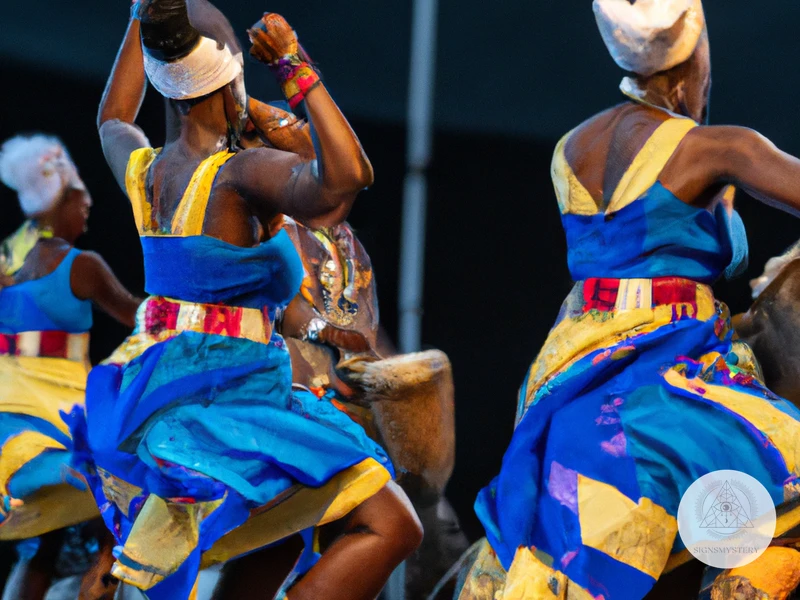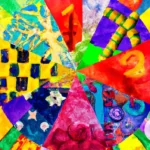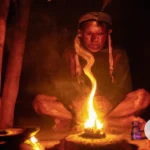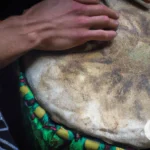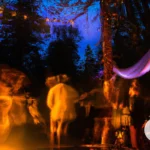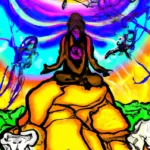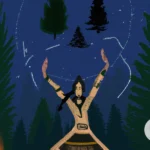Traditional African dance forms have a rich history and cultural significance that spans centuries. The roots of these dance forms are often intertwined with a variety of spiritual and shamanic practices. While these practices may vary across different African tribes and regions, the importance of dance as a means of connecting with the divine is a common thread. In this article, we will explore the spiritual significance of traditional African dance forms in shamanic practices, as well as their physical, mental, and spiritual benefits. By the end of this article, you’ll have a greater understanding of why these dance forms are an important part of African culture, and why they continue to be celebrated and practiced around the world today.
A Brief Look at Shamanism
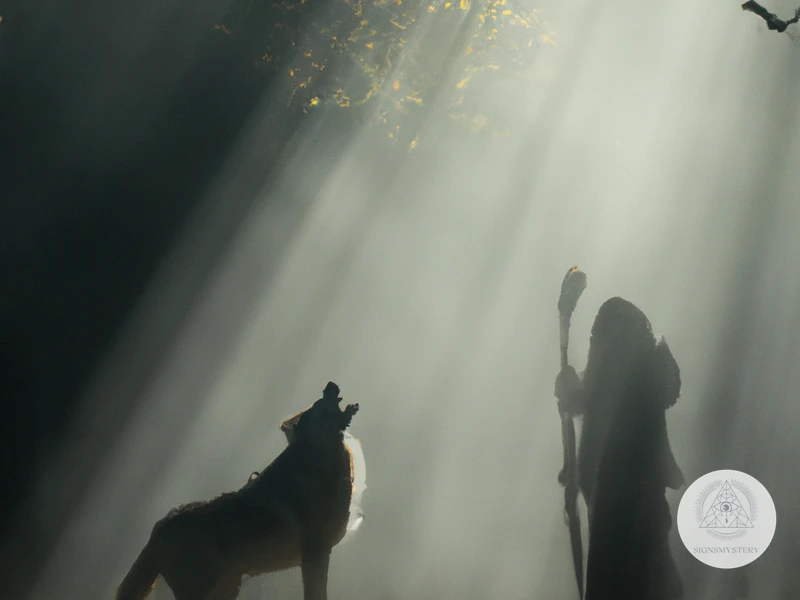
Shamanism is an ancient practice that highlights the role of healers, who link the physical world with the spiritual realm. The practice primarily revolves around the belief that there is a connection between all living things, and harnessing this natural energy can lead to powerful healing and spiritual growth. Shamanism is incorporated into various cultures worldwide, each with their unique variations and practices. One such culture is Africa, with its diverse traditional African dance forms that hold a deep spiritual significance in shamanic practices. These dance forms have been passed down for generations and are respected as a way to connect with the ancestral spirits. For instance, the trance-like movements of the Yoruba tribe’s Egungun dance are believed to help people communicate with their ancestors, who can offer guidance and healing. Such dances are a glimpse into the cultural richness of Africa and the spiritual power of shamanism.
What is Shamanism
Shamanism is a spiritual practice that involves connecting with the spiritual world through a shaman, who is believed to have the ability to communicate with spirits on behalf of the community. Shamanism is a practice that is found in many cultures around the world, and is often associated with healing, divination, and ritual. Shamanism is said to be a practice that has been around for thousands of years, and has evolved to meet the needs of different cultures and societies. One of the key characteristics of shamanism is the use of indigenous tribal dances to connect with the spiritual world. The practice of shamanism involves working with various elements of the natural world, including plants, animals, and minerals, to create healing and transformation. The shaman is considered to be a mediator between the physical and spiritual worlds, and is often called upon to help individuals and communities navigate difficult times. Some of the most well-known shamanic practices involve trance, drumming, and dance. These practices are used to create altered states of consciousness that allow the shaman to connect with the spiritual realm. Other shamanic practices include whirling dervishes, fire dancing, and ecstatic dance. These practices are used to connect with the divine and the natural world, and to create healing and transformation. Shamanism is a complex and diverse spiritual practice that has been used for thousands of years to help individuals and communities connect with the spiritual world and create healing and transformation.
The Role of Dance in Shamanic Practices
Dance has always been an integral part of shamanic practices around the world. A shamanic dance is a form of communication with the spirits, a way of expressing gratitude, healing, and receiving guidance from the spiritual world. Shamanic dance involves more than just physical movement- it is a spiritual practice that requires deep concentration, intention, and connection with the spirits.
Dance plays an important role in shamanic practices because it helps shamans to alter their consciousness so that they can communicate with the spirit world more clearly. Shamans use dance to enter a trance-like state, during which they can communicate directly with the spirits. During shamanic dance ceremonies, the shaman may also make offerings to the spirits, such as food, tobacco, or other sacred objects.
In some shamanic traditions, dance is also a way to connect with the elements of nature. For example, the dance may mimic the movements of animals, birds, or other natural phenomena such as the wind or the waves. This helps the shaman to develop a deep connection with the natural world, which is an important part of many shamanic practices.
The role of dance in shamanic practices is to facilitate communication with the spirit world, to obtain guidance and healing, and to connect with the natural world. Whether it is the ecstatic dance of the Kalahari Bushmen or the fire dancing of the Shamans of the Amazon, dance has been an integral part of shamanic practices throughout history. The power of shamanic dance lies in its ability to help the shaman connect with the spiritual realm and to bring the benefits of this connection back to the community. If you want to learn more about shamanic dance and its healing benefits, check out ecstatic dance or fire dancing practiced in shamanism.
A Brief Overview of Traditional African Dance Forms
Traditional African dance forms are an essential part of African culture. These dance forms are deeply rooted in African traditions and have been used for various occasions such as weddings, funerals, and religious ceremonies. Each African tribe has its unique dance form that distinguishes it from others. Some of the popular traditional African dance forms are Adumu, Bwola, and Kwassa Kwassa.
Adumu is a Maasai dance form originating from Kenya. It is also referred to as the “jumping dance” because the dancers leap high in the air while their feet never touch the ground. Adumu is a dance form performed by Maasai warriors and is usually performed as a rite of passage ceremony.
Bwola is an Acholi dance form originating from Uganda. It is performed by young men during cultural festivals and social events. Bwola involves a lot of footwork and jumping movements, and the dancers wear bells on their ankles to create a rhythmic sound while they dance.
Kwassa Kwassa is a dance form from the Democratic Republic of Congo. It is a popular dance form performed during weddings and other celebrations. The dance form involves a lot of hip movements and is often accompanied by upbeat music.
In addition to these dance forms, there are many other traditional African dance forms that vary based on the region and the tribe. Each dance form signifies different aspects of African culture, including spirituality, social status, and identity. These dance forms are a reflection of the rich history and diverse cultural heritage of Africa.
The Significance of Traditional African Dance Forms in Shamanic Practices
Traditional African dance forms have a deep spiritual significance in shamanic practices. These dances form a crucial part of rituals that connect the physical world with the spiritual realm. The movements in these dances are not just mere physical movements, but they hold symbolic meanings and are performed in a deliberate and intentional way. The use of drums and other traditional instruments further enhances the spiritual experience, as the rhythms and beats are believed to have healing powers and can invoke the spirits of ancestors to guide and protect the tribe. These dances are a way of expressing cultural identity and history, as each tribe has its unique dance form that has been passed down from generations. The spiritual significance of traditional African dance forms cannot be understated, and it remains an integral part of shamanic practices in many societies.
Spiritual Significance of Traditional African Dance Forms
The spiritual significance of traditional African dance forms in shamanic practices is immense. These dances are not merely physical movements, but rather, they are a way of connecting with the divine. They are a unique means of channeling the spiritual energy that is present in all living things. Every dance has its meaning and purpose, and it is believed that these dances can invoke spiritual experiences and connect communities to their ancestors.
In African culture, dance is not only a way of expressing emotions, but it also has spiritual significance. It is an integral part of religious ceremonies and rituals and is used to invoke the power of spirits to bring forth blessings, healings, and guidance. The movements, rhythms, and songs used in traditional African dance forms are believed to be infused with spiritual energy, acting as a gateway to the spirit world.
Each traditional African dance form has its own spiritual significance. For instance, the Adumu dance of the Maasai tribe represents the warrior and is intended to connect them with their warrior ancestors. The Bwola dance of the Acholi people is used to welcome guests and create peace among the community. While the Gwara Gwara dance of the Xhosa people is used to celebrate weddings and other significant life events.
These dances are not only a medium for spiritual expression and connection, but they also have practical purposes. They promote a sense of community and unity, and they serve as a way to teach and share stories and history through symbolic gestures and movements. It is not uncommon for traditional African dances to be passed down over generations, maintaining their spiritual significance and cultural heritage.
The spiritual significance of traditional African dance forms is vast, and it is a vital part of African culture that has been practiced for centuries. These dances provide a profound spiritual connection, enabling individuals to connect with their community, their ancestors, and the divine. The practice of these dances ensures that African heritage and culture remain alive and continue to benefit generations to come.
Dance Forms of Different African Tribes and their Significance in Shamanic Practices
There are many different dance forms among African tribes that hold great significance in shamanic practices. Each tribe has its own distinct dance style that carries unique cultural and spiritual significance.
For example, the Maasai tribe of Kenya and Tanzania perform a warrior dance known as the “Adumu” or “jumping dance.” This dance is performed by young Maasai men as a rite of passage into adulthood and symbolizes bravery and the ability to overcome obstacles. In shamanic practices, the Adumu dance is believed to bring forth the warrior spirit to aid in battle against negative energies and spirits.
The Zulu tribe of South Africa perform a dance called the “Indlamu” or “elephant dance.” This dance is often performed during times of conflict or before a hunt and symbolizes strength and power. In shamanic practices, the Indlamu dance is believed to channel the energy of the elephant and bring a heightened sense of power and courage to the dancers.
The Dogon tribe of Mali perform a masked dance known as the “Kanaga dance.” This dance is performed to honor the ancestors and is said to bring clarity and understanding to the dancers. In shamanic practices, the Kanaga dance is believed to open up spiritual channels and allow for communication with the spirit world.
The Bamana tribe of Mali perform a dance called the “Chi Wara” or “sow dance.” This dance is performed to celebrate the cultivation of crops and the gifts of the earth. In shamanic practices, the Chi Wara dance is believed to bring abundance and prosperity to the community.
The dance forms of different African tribes hold immense spiritual significance in shamanic practices. These dances are believed to channel the energy of nature and the ancestors, bringing forth healing, guidance, and protection. Through the practice of traditional African dance, one can tap into the ancient spiritual traditions of these powerful and vibrant cultures.
Health Benefits of Traditional African Dance Forms
Traditional African dance forms have numerous health benefits for the body and mind. Physically, these dances are a great form of aerobic exercise that can improve cardiovascular health, muscular strength, and endurance. They are an excellent way to burn calories and maintain a healthy weight. Mentally and spiritually, traditional African dances can help reduce stress and anxiety levels, while increasing self-confidence and overall happiness. These dances are often performed in groups, which fosters a sense of community and belonging. Additionally, they provide an opportunity for self-expression
Subscribe to Our Newsletter
Sign up to receive the latest news and updates.
Physical Benefits
Engaging in traditional African dance forms has numerous physical benefits. One of the most prominent benefits is that it serves as an excellent cardiovascular exercise. The constant movement and rapid pace of the dance works, which works several muscle groups in the body. This increased physical activity can help to improve your overall fitness level, promote weight loss, and potentially reduce your risk of developing several heart-related diseases.
Traditional African dance requires coordination, balance, and control, resulting in better physical stability and improved body posture. These dance forms generally involve rapid and dynamic movements, which can enhance your body’s flexibility and range of motion.
In addition to these benefits, traditional African dance can also tone and shape your muscles. The frequent jumps, lunges, and other moves that these dances require can help to build strength and tone your muscles, especially in your lower body. This can lead to better muscle endurance, improved balance and coordination, and reduced muscle fatigue.
Another significant physical benefit of traditional African dance is that it can help to boost your body’s immune system. Regular and consistent dance practice can increase the production of certain immune cells in your body and decrease your chances of developing infections.
Participating in traditional African dance can help to improve your physical health in several ways, including improved heart health, increased flexibility and range of motion, toning of muscles, better coordination and balance, and a stronger immune system.
Mental and Spiritual Benefits
When it comes to traditional African dance forms in shamanic practices, the mental and spiritual benefits are just as significant as the physical benefits. First and foremost, these dances connect the dancer with the present moment and allow for a deeper connection with the spiritual realm. This connection can lead to a sense of inner peace and harmony, as well as a feeling of being grounded in one’s own body and mind.
Additionally, traditional African dance forms often tell stories or depict cultural myths and legends through movement. These dances can help to preserve cultural traditions and allow dancers to connect with their ancestral heritage. For those who may have been disconnected from their cultural roots, participating in these dances can be a powerful way to reconnect with their past and find a sense of identity and belonging.
On a mental level, these dances can also have a therapeutic effect. Dancing can provide an outlet for emotional expression and release, and can help to alleviate stress and anxiety. Additionally, the rhythmic movements can help to promote a sense of focus and clarity, allowing dancers to connect more deeply with themselves and their surroundings.
The mental and spiritual benefits of traditional African dance forms in shamanic practices are numerous. They offer a way to connect with one’s own spirituality and cultural heritage, while also providing therapeutic benefits for the mind and emotions. Whether practiced as a part of a shamanic ceremony or simply as a form of personal expression and exploration, these dances can provide a profound sense of joy, healing, and connection to oneself and others.
Conclusion
In conclusion, the spiritual significance of traditional African dance forms in shamanic practices cannot be overstated. Through dance, the body and mind are able to connect and align with the spirits, allowing for a deeper understanding and connection with the cosmos. The various dance forms of different tribes each have their own spiritual significance, promoting healing, vision, and protection. Additionally, traditional African dance forms offer numerous health benefits, both physical and mental. Everyone can benefit from incorporating these beautiful and rich cultural practices into their lives, fostering a greater sense of connectivity and well-being. Strongly consider exploring the spiritual and health benefits of traditional African dance forms, and honor the wisdom they offer.
Summary of Traditional African Dance Forms in Shamanic Practices
The use of traditional African dance forms in shamanic practices is a crucial component of many spiritual rituals. Across various African cultures, dance has been an integral part of shamanic practices for centuries. The significance of these dances goes beyond mere physical movements and incorporates spiritual, cultural, and social elements.
African dance forms are diverse and unique, with each tribe having distinctive styles and movements. However, they share the common theme of rhythmic movements and energetic performances that are both captivating and enchanting. These traditional dances are usually accompanied by music, chanting, singing, and various other sensory cues.
The spiritual significance of traditional African dance forms in shamanic practices is immense. These dances are believed to connect the dancer and the audience to the spirit world, and to bring them into a state of heightened consciousness. The movements, music, and chants work together to create an intensely spiritual and meditative atmosphere that helps individuals connect to their inner selves.
Apart from the spiritual benefits, traditional African dance forms also offer significant health benefits. These dances are intense physical workouts that help in building stamina, strength, and flexibility. They can help in improving cardiovascular health, reducing stress, and providing an overall sense of well-being.
Traditional African dance forms hold immense spiritual and cultural significance in shamanic practices. Their unique movements, rhythms, and chants create a deeply spiritual atmosphere that helps individuals connect with their inner selves and the spirit world. The physical benefits of these dances make them an ideal way to stay healthy and fit.
How Traditional African Dance Forms Can Benefit Everyone
When it comes to the benefits of traditional African dance forms, it’s not just limited to shamanic practices. These dance forms have the potential to benefit everyone who engages in them. One of the primary advantages of this type of dancing is physical fitness. African dances are known for being high-energy, with fast-paced movements that can get your heart rate up and improve your cardiovascular health. Additionally, these dance forms work your muscles and can help you build strength and flexibility.
But the benefits of African dance forms extend beyond just physical fitness. These dances have a strong focus on rhythm and musicality, which can be a unique and fun way to improve your coordination and motor skills. Dancing to the complex beats and rhythms of African music can also help you develop a better sense of timing and improve your ability to move your body in sync with others.
There are also mental and emotional benefits to African dance forms. Dancing is a great stress-reliever and can help you to release tension and feel more relaxed. The strong music and community-centered nature of these dances can also create a sense of belonging and connectedness, which can improve your mood and overall sense of well-being.
Finally, engaging in traditional African dance forms can be a way to connect with and honor cultural traditions. By participating in these dances, you are helping to keep these valuable cultural practices alive and passing them down to future generations. This can be a powerful way to connect with your own roots or learn about and appreciate the cultures of others.
There are many reasons why traditional African dance forms can benefit everyone. From improving physical fitness to enhancing coordination and motor skills, reducing stress, and connecting with cultural traditions, the potential benefits are many and diverse. So why not give African dance a try and see how it can enhance your life?
Frequently Asked Questions
What is the spiritual significance of traditional African dance forms in shamanic practices?
Traditional African dance forms are believed to have a deep spiritual significance in shamanic practices. They are believed to have the power to connect people with their ancestors and spirits, and to restore balance and harmony in the natural world.
What is shamanism?
Shamanism is an ancient spiritual practice that involves the use of ritual, music, dance, and other techniques to connect with the spirit world and to heal physical, mental, and spiritual ailments.
What is the role of dance in shamanic practices?
Dance is an essential element of shamanic practices as it is believed to help people enter into a trance-like state, where they can connect with their ancestors and spirits and receive guidance and healing.
What are some examples of traditional African dance forms?
Some examples of traditional African dance forms include the Sabar dance of Senegal, the Adumu dance of the Maasai tribe in Kenya, and the Gumboot dance of South Africa.
What is the spiritual significance of the Sabar dance?
The Sabar dance is believed to help people connect with the spirits and ancestors of the Wolof people of Senegal, and to help restore balance and harmony in the natural world.
What is the significance of the Adumu dance in Maasai culture?
The Adumu dance is a rite of passage for young Maasai men and is believed to be a way for them to connect with their ancestors and to become warriors.
What are the physical benefits of traditional African dance forms?
Traditional African dance forms are a great form of exercise and can help improve flexibility, strength, and stamina.
What are the mental and spiritual benefits of traditional African dance forms?
Traditional African dance forms are believed to help people connect with their inner selves and to promote a sense of harmony and well-being.
How can traditional African dance forms benefit everyone?
Traditional African dance forms can benefit everyone by promoting physical health, mental well-being, and spiritual connection. They can also be a fun and enjoyable way to experience different cultures.
Is it necessary to have prior knowledge of African culture to understand the spiritual significance of traditional African dance forms?
No, it is not necessary to have prior knowledge of African culture to understand the spiritual significance of traditional African dance forms. However, it is always helpful to learn more about the cultural context in which they are practiced.

